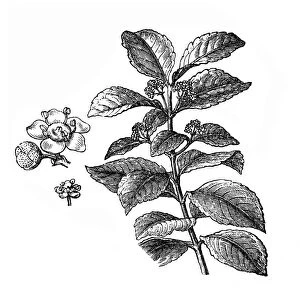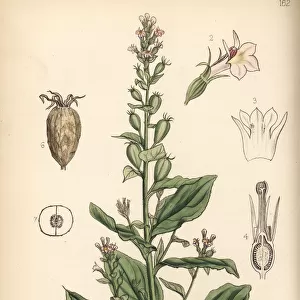Home > Europe > United Kingdom > England > London > Museums > Natural History Museum
Carthamus tinctorius, safflower
![]()

Wall Art and Photo Gifts from Mary Evans Picture Library
Carthamus tinctorius, safflower
Illustration from the Botany Library Plate Collection held at the Natural History Museum, London
Mary Evans Picture Library makes available wonderful images created for people to enjoy over the centuries
Media ID 8617331
© Mary Evans Picture Library 2015 - https://copyrighthub.org/s0/hub1/creation/maryevans/MaryEvansPictureID/10706652
Asteraceae Asterales Asterid Carthamus Compositae Eudicot Angiospermae Dicot Dicotyledon Magnoliophyta Oilseed Safflower
EDITORS COMMENTS
1. Title: Safflower (Carthamus tinctorius): A Vibrant Blossom from the Asteraceae Family This botanical illustration showcases the radiant beauty of Carthamus tinctorius, commonly known as safflower. The illustration, held in the esteemed Botany Library Plate Collection at the Natural History Museum in London, offers a detailed and intricate portrayal of this orange-hued flowering plant. Safflower is a member of the Asteraceae family, also known as the composite or sunflower family. This large and diverse family is characterized by its distinctive inflorescences, which consist of many small flowers arranged in a compact head. The safflower plant is an angiosperm, a type of seed-bearing plant that encloses its seeds in an ovary. It is a dicot, meaning it has two cotyledons, or seed leaves, and is an eudicot, which is a subgroup of dicots that have certain characteristics, such as the presence of a secondary vascular system. The safflower plant is native to Europe, Asia, and the Mediterranean region, and it is now cultivated in many parts of the world for its edible seeds, which are rich in oil. The bright orange or red flowers of the safflower plant have long been appreciated for their beauty, and they have been used in traditional medicine and as a source of natural dye. The illustration reveals the intricacies of the safflower's flower head, which is composed of many tiny individual flowers, each with a tubular corolla and a central disc. The vivid orange color of the petals is due to the presence of carthamin, a natural pigment. The illustration also highlights the plant's foliage, which is characterized by its lanceolate leaves and prominent veins. This stunning botanical illustration offers a glimpse into the intricacies and beauty of the natural world, and it serves as a reminder of the rich diversity of plant life that exists on our planet.
MADE IN AUSTRALIA
Safe Shipping with 30 Day Money Back Guarantee
FREE PERSONALISATION*
We are proud to offer a range of customisation features including Personalised Captions, Color Filters and Picture Zoom Tools
SECURE PAYMENTS
We happily accept a wide range of payment options so you can pay for the things you need in the way that is most convenient for you
* Options may vary by product and licensing agreement. Zoomed Pictures can be adjusted in the Cart.



